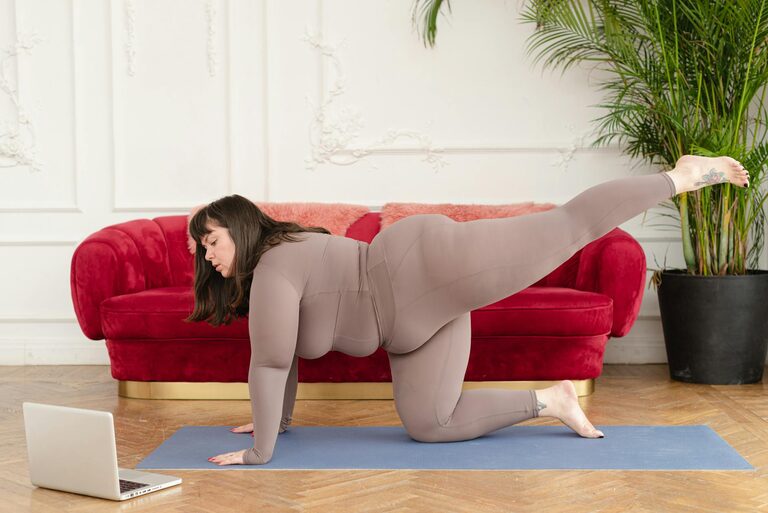Stretching is a simple yet powerful way to improve your overall physical health and wellbeing. Whether you’re new to exercise or looking to add a gentle routine to your day, stretching at home can help increase your flexibility, reduce muscle tension, and enhance circulation. This beginner’s guide will walk you through the basics of stretching, why it matters, and easy routines you can do without any special equipment.
Why Stretching Matters
Stretching isn’t just for athletes or fitness enthusiasts. It’s essential for anyone looking to maintain mobility and prevent injuries. Here are some benefits of regular stretching:
– Improves flexibility: Stretching helps lengthen muscles and tendons, leading to better range of motion.
– Reduces muscle stiffness: It can alleviate tightness caused by sitting or repetitive activities.
– Enhances circulation: Stretching promotes blood flow to muscles and joints.
– Improves posture: Flexible muscles support better alignment and reduce strain.
– Relieves stress: Gentle stretching can have a calming effect on both the mind and body.
When to Stretch
Stretching can be done at various times throughout the day, but it’s important to choose the right timing and approach:
– After warming up: Before intense workouts, do light dynamic stretches to prepare your muscles.
– Post-exercise: Static stretching after your workout can help muscles relax and recover.
– Anytime during the day: Gentle stretches at your desk or home can release tension and break up long periods of sitting.
Types of Stretching
Understanding the difference between dynamic and static stretching is key for a balanced routine:
– Dynamic stretching: Involves controlled movements that prepare your muscles for activity (e.g., leg swings, arm circles). Best before exercise.
– Static stretching: Involves holding a stretch for 15–60 seconds to lengthen muscles. Best done after workouts or during relaxation.
Essential Equipment for Home Stretching
While you don’t need much to stretch at home, a few simple items can enhance your routine:
– Yoga mat: Provides cushioning and grip for floor stretches.
– Comfortable clothing: Wear breathable, stretchy clothes that allow free movement.
– Stretching strap or towel: Helps deepen stretches, especially for hamstrings or calves.
– Chair or wall: Can be used for balance support during certain stretches.
A Beginner’s Stretching Routine
Here’s a simple, full-body stretching routine designed for beginners. Hold each stretch gently, never forcing your body, and remember to breathe deeply throughout.
1. Neck Stretch
– Sit or stand upright.
– Tilt your head slowly toward your right shoulder until you feel a gentle stretch.
– Hold for 20 seconds, then switch sides.
2. Shoulder Rolls
– Lift your shoulders up toward your ears.
– Roll them backward in a circular motion 10 times.
– Repeat rolling them forward 10 times.
3. Cat-Cow Stretch (for spine flexibility)
– Get on your hands and knees on your mat.
– Arch your back, tucking your chin to your chest (Cat).
– Then drop your belly and lift your head and tailbone (Cow).
– Repeat slowly 8–10 times.
4. Seated Hamstring Stretch
– Sit on the floor with your legs extended straight.
– Gently reach toward your toes, keeping your back straight.
– Hold for 30 seconds. Don’t bounce.
5. Quadriceps Stretch
– Stand tall, holding onto a chair or wall if needed.
– Bend your right knee and hold your foot behind you.
– Keep knees close and push your hips slightly forward.
– Hold for 20 seconds; switch legs.
6. Chest Opener
– Stand or kneel with hands clasped behind your back.
– Straighten your arms and gently lift your hands upward.
– Open your chest and hold for 20–30 seconds.
7. Seated Spinal Twist
– Sit cross-legged or with legs extended.
– Place your right hand on your left knee and twist your torso gently.
– Hold for 20 seconds, then switch sides.
8. Calf Stretch
– Stand facing a wall at arm’s length.
– Step your right foot back and press the heel into the floor.
– Keep your back leg straight and bend the front knee slightly.
– Hold for 30 seconds. Switch legs.
Tips for Safe Stretching
– Warm up first: Stretching cold muscles can lead to injury.
– Move gently: Avoid bouncing or jerking during stretches.
– Listen to your body: Stretching should feel good, not painful.
– Breathe deeply: Helps muscles relax and improves oxygen flow.
– Be consistent: Aim for stretching 3–5 times per week for lasting benefits.
Final Thoughts
Starting a stretching routine at home is an excellent way to care for your body no matter your age or fitness level. It can be as quick as 10 minutes a day and requires minimal equipment. With patience and consistency, you’ll notice improvements in your flexibility, posture, and overall comfort. So roll out your mat, put on some comfortable clothes, and begin your journey toward a more flexible, relaxed you.
Happy stretching!

